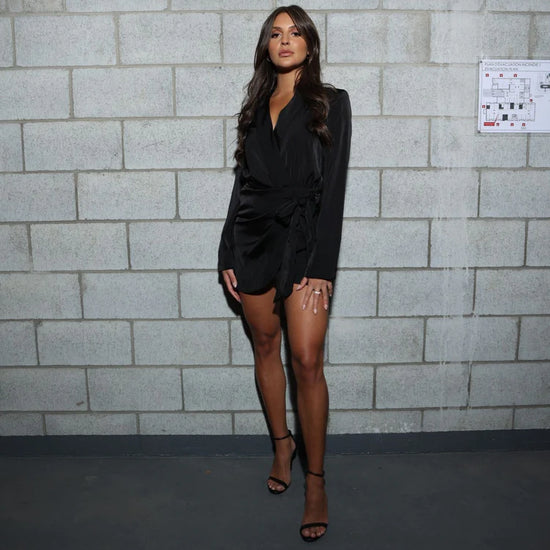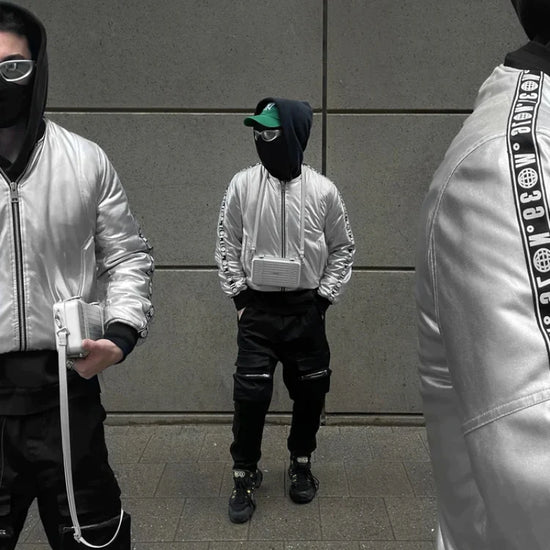Welcome to the Fashion Hub at 8LACK Clothing's online store - your premier source for stylish black attire that endures and adapts to any occasion. Our carefully curated selection features exclusive offerings from top-tier brands, all available in black. We take great pride in being recognized as a top destination for black clothing by prominent Canadian media outlets like MTL Blog and Global News. Let's get into today's topic.
Introduction
Utility design has a rich and varied history that has been intertwined with fashion for centuries. At its core, utility design is about creating products that are practical and functional, but over time it has evolved to become a key aesthetic in modern fashion. This article will explore the history of utility design and its influence on today's fashion.
History
The history of utility design can be traced back to the Industrial Revolution in the late 18th and early 19th centuries. This was a time of great change in the way goods were produced, with mass production techniques and machines rapidly replacing traditional craft methods. As a result, products became more affordable and accessible to the masses, and designers began to focus on creating products that were practical and functional, rather than purely ornamental.
One of the most important examples of utility design in this period was the development of workwear. As industrialization led to the growth of factories and other workplaces, workers needed clothing that was both durable and comfortable. This led to the development of workwear such as overalls, coveralls, and denim jeans, which were designed to be practical and hard-wearing.
As the 20th century dawned, utility design continued to evolve. The two World Wars played a significant role in this evolution, as they brought about a major shift in society and the way people lived their lives. During both wars, resources were scarce, and designers were forced to create products that were both practical and efficient.
One of the most notable examples of this was the development of the utility suit, which was a key feature of British wartime fashion. These suits were made from practical materials such as wool and cotton, and were designed to be both comfortable and hard-wearing. They featured streamlined silhouettes with minimal detailing, reflecting the practicalities of wartime life.
The utility trend continued to develop throughout the 1940s and 1950s, with designers such as Christian Dior and Coco Chanel creating collections that incorporated utilitarian elements. Dior's famous New Look collection of 1947, for example, featured full skirts and nipped-in waists, but also included practical elements such as pockets and functional buttons.
Throughout the 1960s and 1970s, utility design became a key aesthetic in fashion. This was partly due to the rise of the counterculture movement, which rejected the mainstream fashion industry and celebrated a more functional and practical approach to clothing. The popularity of denim jeans, for example, can be traced back to this period, as they were seen as a practical and durable alternative to more traditional fabrics.
In the 1980s and 1990s, utility design continued to influence fashion, as designers such as Yohji Yamamoto and Martin Margiela incorporated utilitarian elements into their collections. These designers often used oversized silhouettes, functional details such as pockets and zips, and practical materials such as denim and cotton.
Influence on Modern Fashion
Today, utility design is still a key feature of fashion. This can be seen in the popularity of workwear-inspired clothing, such as cargo pants and utility jackets, which have become staples in many people's wardrobes. The trend towards sustainable and ethical fashion has also led to a renewed interest in utility design, as it emphasizes the importance of creating clothing that is both practical and long-lasting.
One of the key features of utility design in modern fashion is its focus on functionality. This can be seen in the use of durable materials such as cotton and denim, as well as synthetic fibers like polyester and rayon and the incorporation of practical elements such as pockets and zips. The trend towards sustainable and gender-neutral clothing has also been influenced by utility design, as it emphasizes the importance of creating clothing that is practical and functional for all people while using recycled or upcycled materials to avoid wasting precious resources.
Brands that Feature Utility Designs
- ERVINE: luxury pieces inspired by modern architecture, symmetry, clean lines, & shapes. created with gender-fluidity, minimalism & sustainability in mind.
- XIAN: a cutting-edge menswear brand that seamlessly blends functionality with style, catering to the modern "urban ninja".


